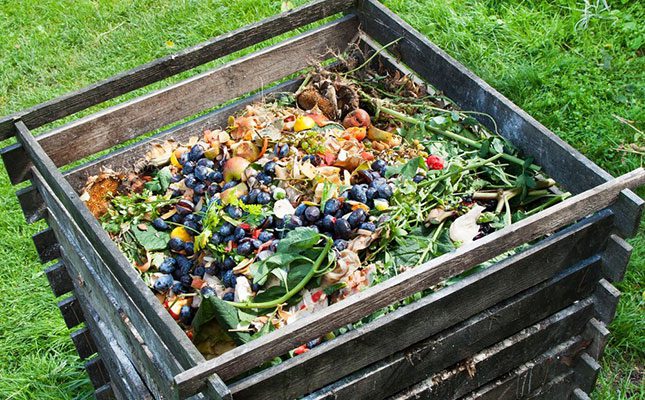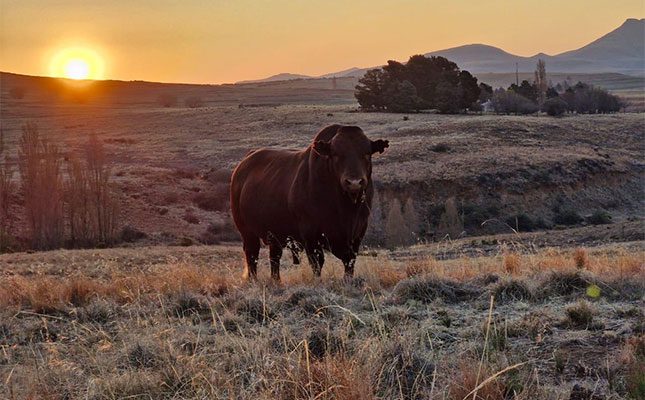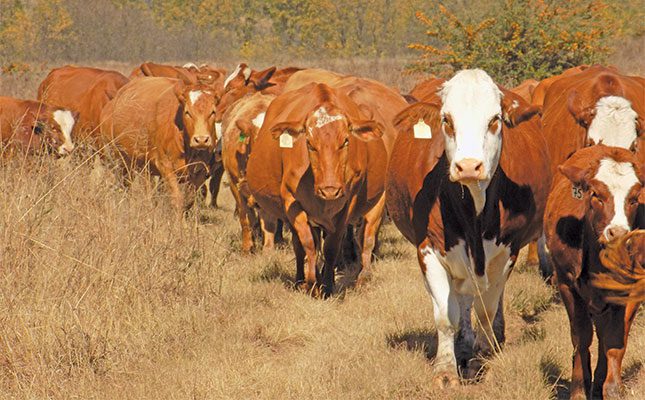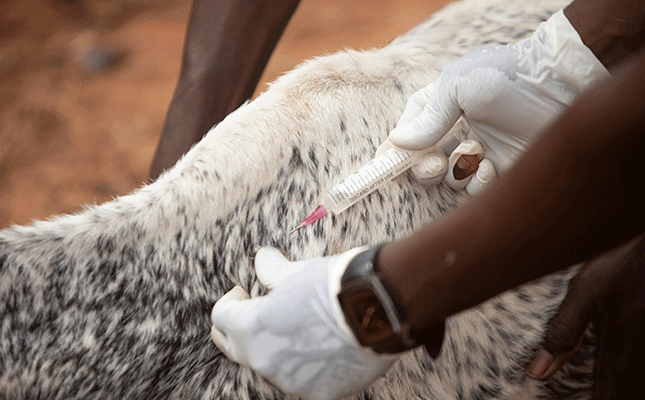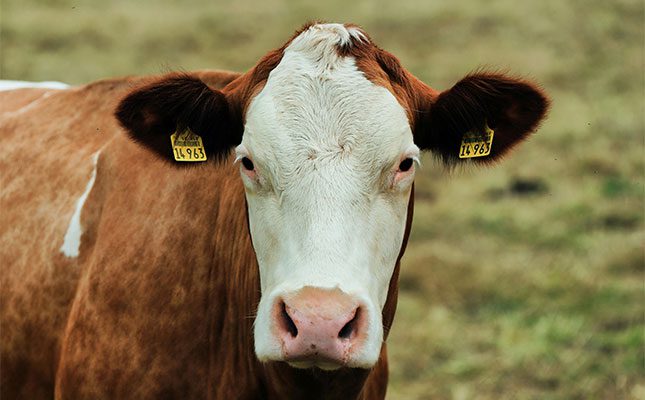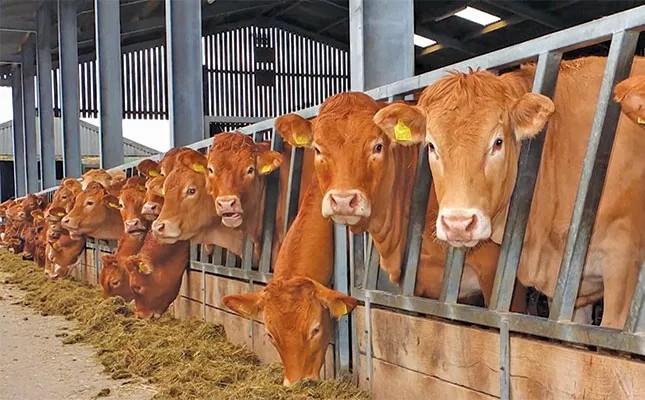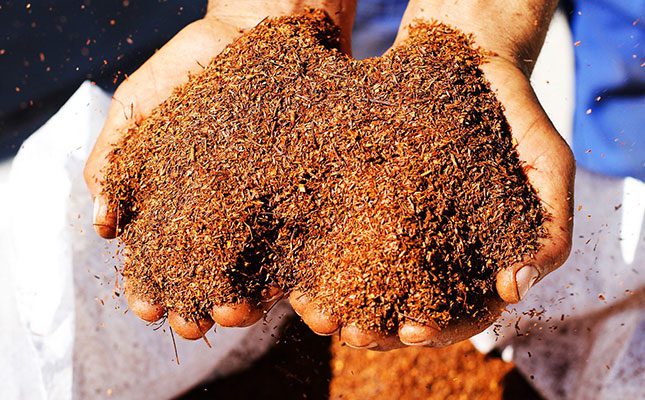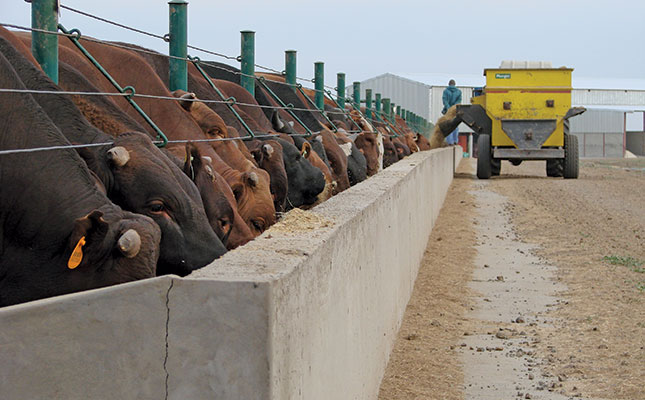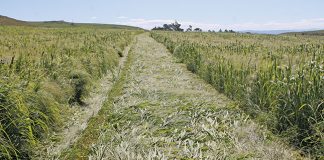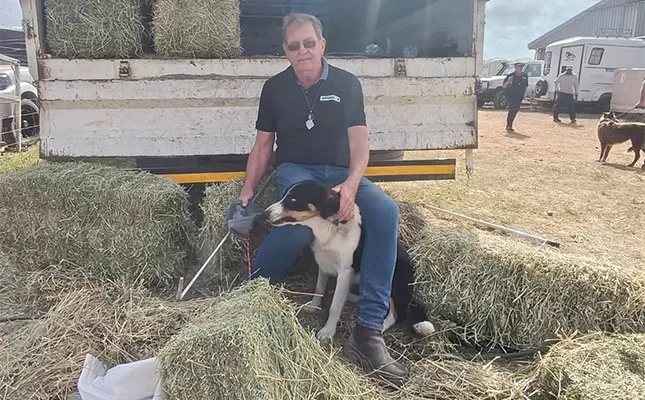
Photo: Glenneis Krile
One glance at Jurie van der Vyver’s sheepdog, Cap, is enough to see his sharp intelligence and lively personality. At the South African Sheepdog Association’s exhibition at Nampo Cape, he put those traits to work, weaving through obstacles with precision and confidently guiding the sheep into place in no time.
Van der Vyver downplays the performance, but Cap is no ordinary dog, as he was crowned South African Novice Champion at the national championships last November.
Behind this success is a careful balance of genetics, disciplined training, and the right environment, elements that Van der Vyver believes are essential in shaping a top-performing sheepdog.
Cap’s famous bloodline
Cap is, quite literally, border collie royalty. His sire, Llangwm Cap, and grandsire, Roy, both won world championships, and their trainer, Aled Owen, is the only person in the world to have claimed the title twice.
Cap’s dam, Sissy, is just as impressive. At 12 years old, she is still competing in national championships and boasts a string of wins from her younger years.
Bringing this prized bloodline from Wales to South Africa was no easy feat. Around 2019, Van der Vyver and his friend, Attie Gunter, each imported a straw of semen from Llangwm Cap, at a cost of R50 000 per straw.
“The vet told us there was only a 60% chance of the semen taking, so [Gunter and I] each imported a straw and agreed to give one of the offspring to the other as a safeguard if the insemination failed,” recalls Van der Vyver.
The process quickly proved more challenging than expected. A South African vet was initially lined up to collect the semen, but plans fell through when Llangwm Cap fell ill, forcing a delay.
The pair eventually worked through an agency, but their first shipment was sent back to Wales because of COVID-19-related restrictions, as semen was not deemed an essential import.
When the straws finally did arrive, the next hurdle was timing. “The bitches had to be inseminated at exactly the right time for the best chance of success. Sissy went into heat three times before we decided to go ahead,” explains Van der Vyver.
Each assessment meant a 600km round trip from Riversdale to Cape Town.
The insemination procedure itself nearly cost Molly, Gunter’s dog, her life due to complications, but the veterinary team managed to save her, and the semen took.
In the end, Sissy produced four healthy puppies.
Van der Vyver kept Cap, gave one pup, Zara, to Gunter (whose bitch produced seven puppies), and sold the other two, Roy and Nan, to experienced handlers.
All the puppies have since grown into sought-after working dogs, cementing the reputation of this exceptional bloodline and contributing to the strength of South African sheepdog genetics.
Trust, training, and discipline
Van der Vyver describes Cap as a truly exceptional dog, though he admits he sometimes wonders if Zara is the better one: “It is impossible to know which will excel when they are pups. A dog may come from extraordinary bloodlines and still turn out to be a dud.”
That’s why he stresses that genetics alone won’t make a champion or good herding dog. A sheepdog’s ability in the field is shaped just as much by the environment and the quality of training it receives.
Van der Vyver starts working with his dogs from an early age, first focusing on basic obedience and building trust before introducing them to sheep. Training sessions are short yet consistent, designed to nurture a dog’s natural instincts without overwhelming it.
Raising a dog like Cap requires constant attention and patience. “This isn’t the same as having a couple of dogs to walk behind sheep. A top herding dog must respond instantly to a whistle or command, anticipate sheep movements, and work with precision under pressure, especially if you want to compete in competitions,” he explains.
Lessons from abroad
South African farmers are still fortunate to have relatively affordable workers, but Van der Vyver points out that in countries like Australia, New Zealand, England, and Ireland, skilled farmworkers are scarce and extremely expensive. In those countries, highly trained sheepdogs are indispensable, often doing the work of several people.
To fully exploit their dogs’ potential, many farmers there design handling facilities with herding in mind: using circular or curved pens that work with sheep’s natural movement patterns; narrow, V-shaped raceways; and strategically placed gates to help handlers and dogs move sheep quickly and calmly.
These steps reduce the need for farmworkers but the stress on animals, according to Van der Vyver.
Working the dogs
He says he can manage many of his sheep-related tasks with just two dogs. When the first pair tires, especially on hot days, he rotates them with another two to keep work moving efficiently.
He uses English commands for his dogs but notes that giving each dog a unique set of commands, or even working in a different language, can make handling easier. “It helps prevent confusion when giving instructions to more than one dog at a time,” he explains.
Competition performance, he adds, is also unpredictable. Factors like temperature, the temperament of the sheep, their willingness to co-operate, and even the distraction of bitches in heat can all affect a dog’s performance on the day.
For Van der Vyver, the unpredictability is part of the joy. Every trial, every flock, and every dog brings something new.
Yet when Cap crouches low, his eyes locked on the sheep, his body taut with focus, there’s a quiet understanding between man and dog that no training manual can teach.
“You can train and prepare,” Van der Vyver says softly, glancing at Cap, “but at the end of the day, the dog must want to work with you. And when it does, there’s nothing quite like it.”

